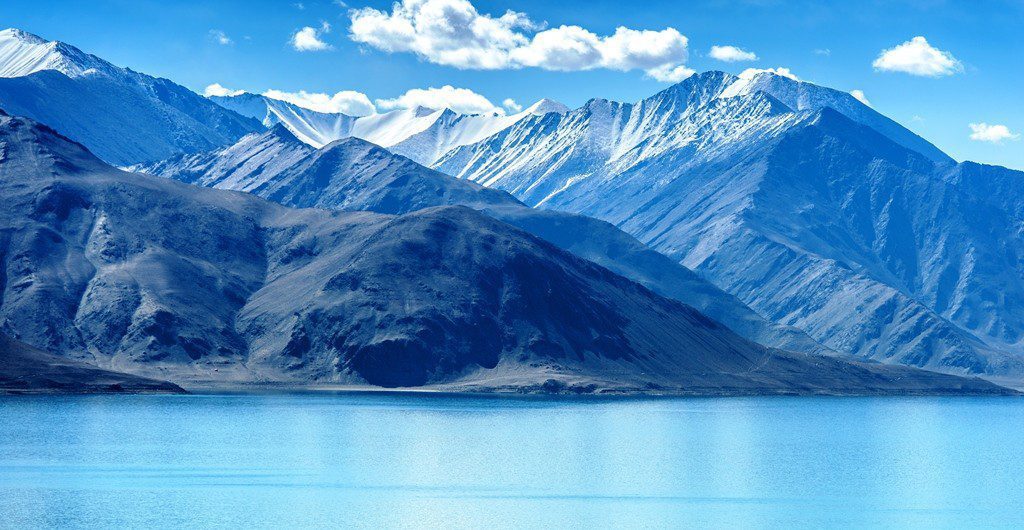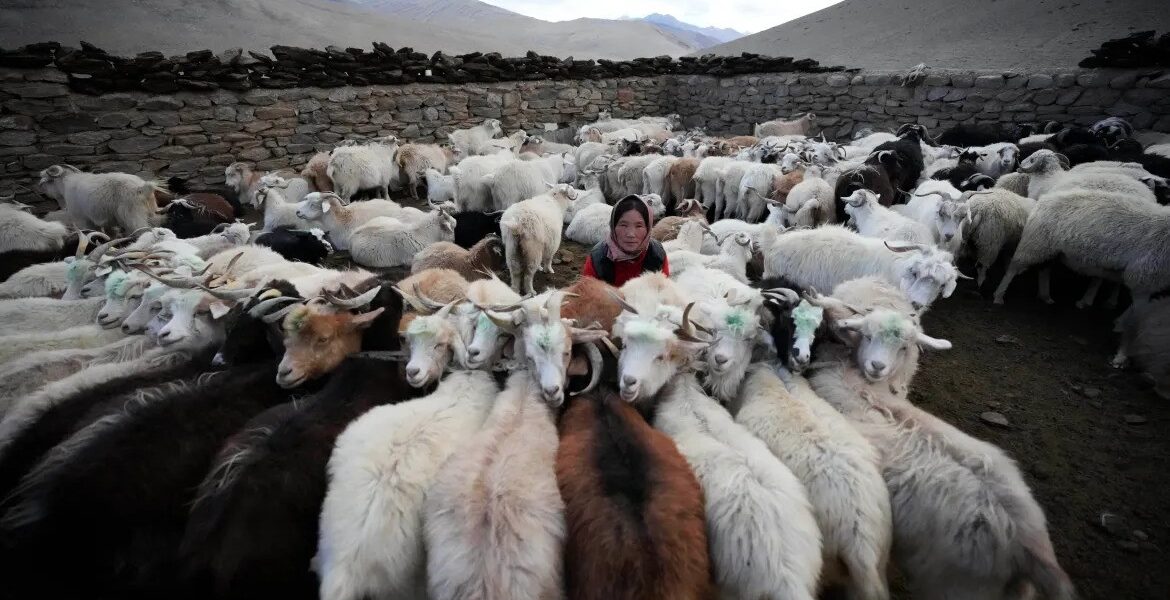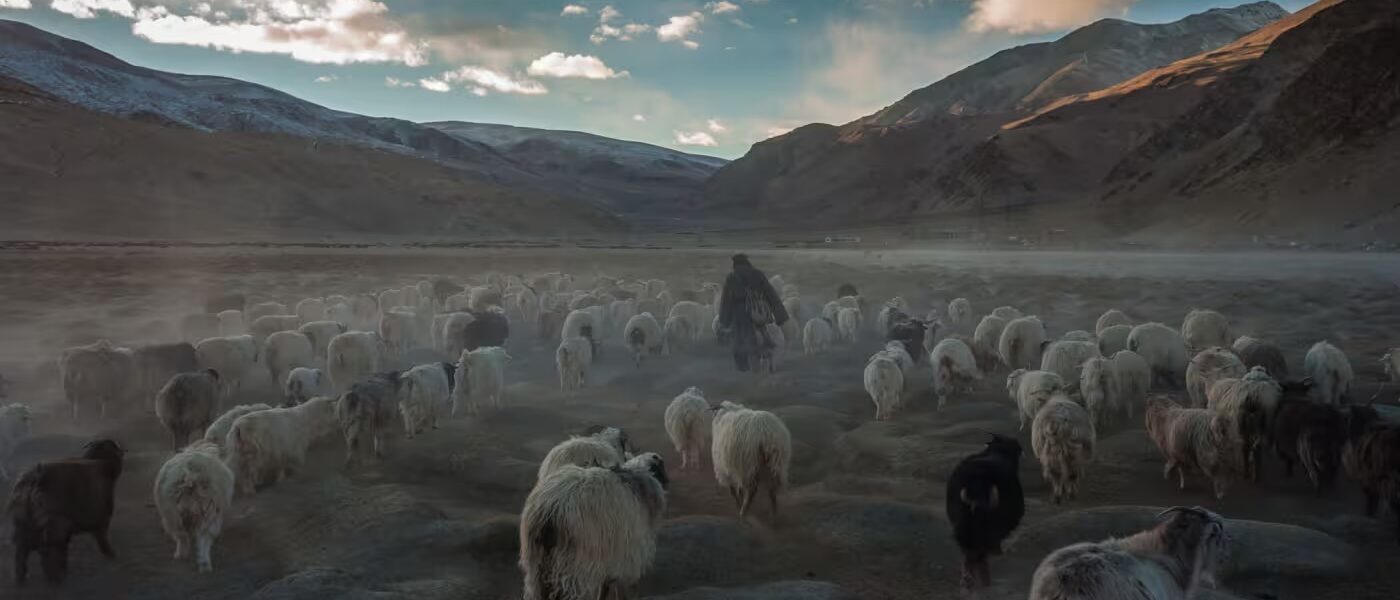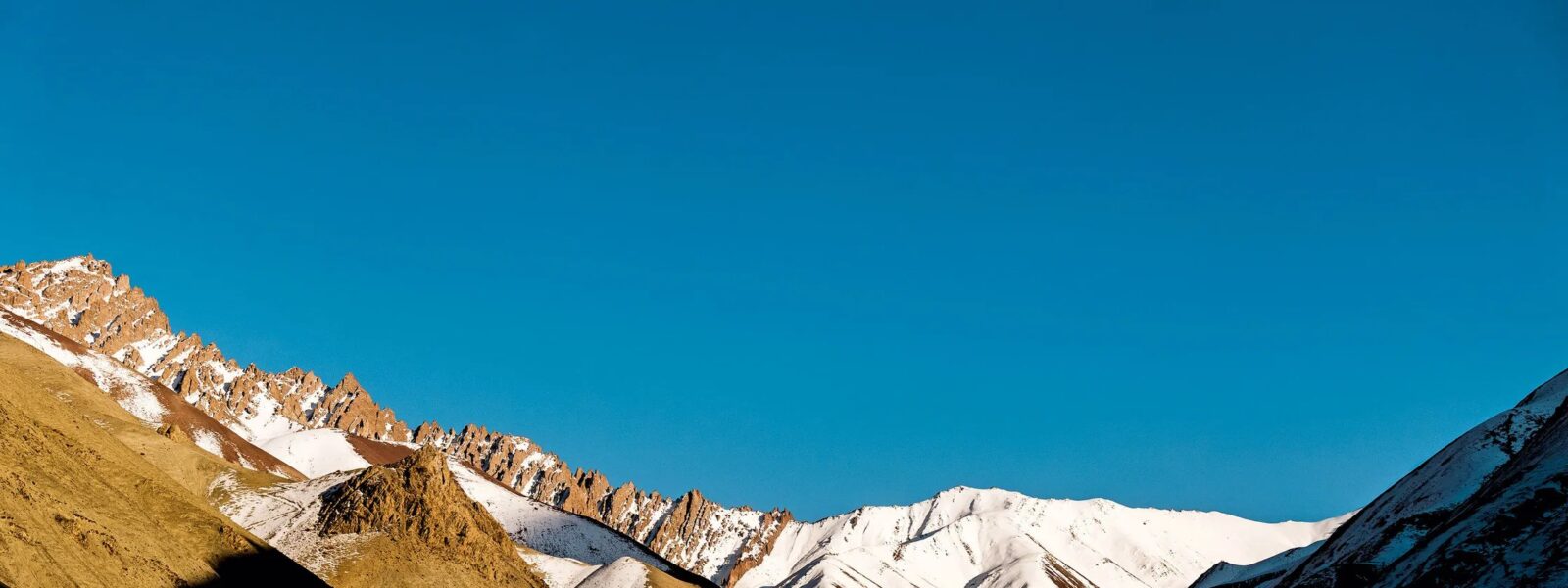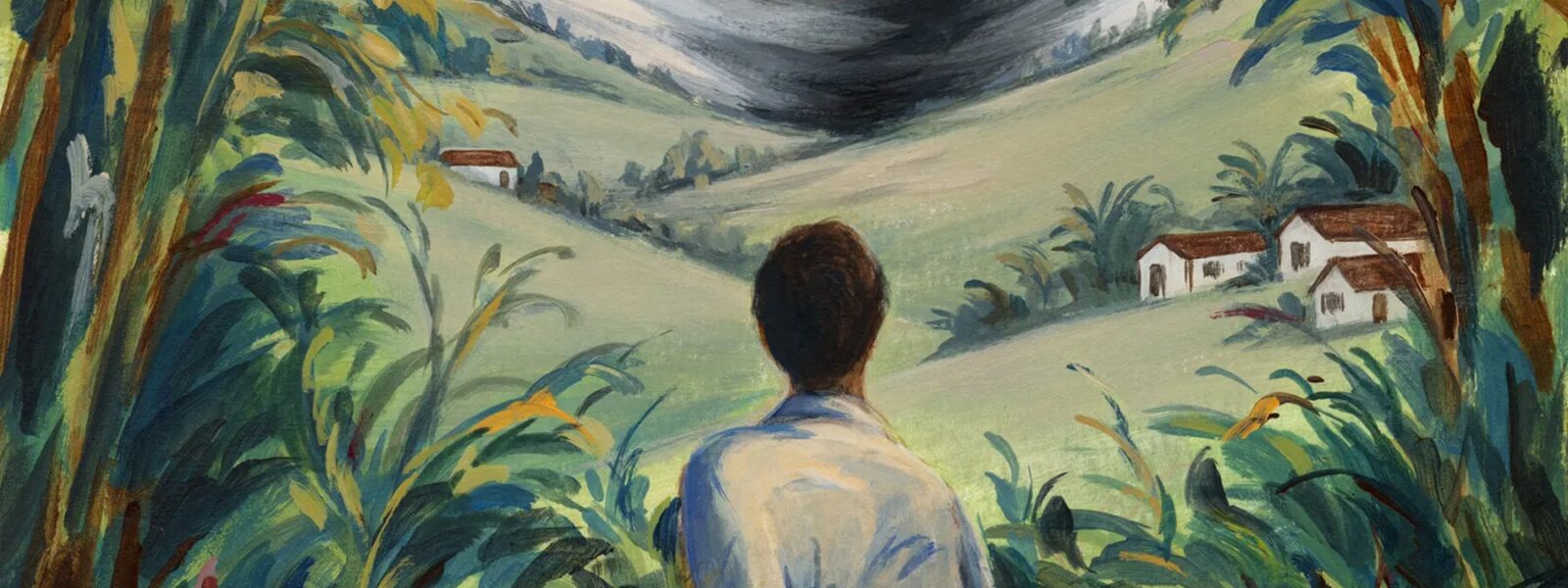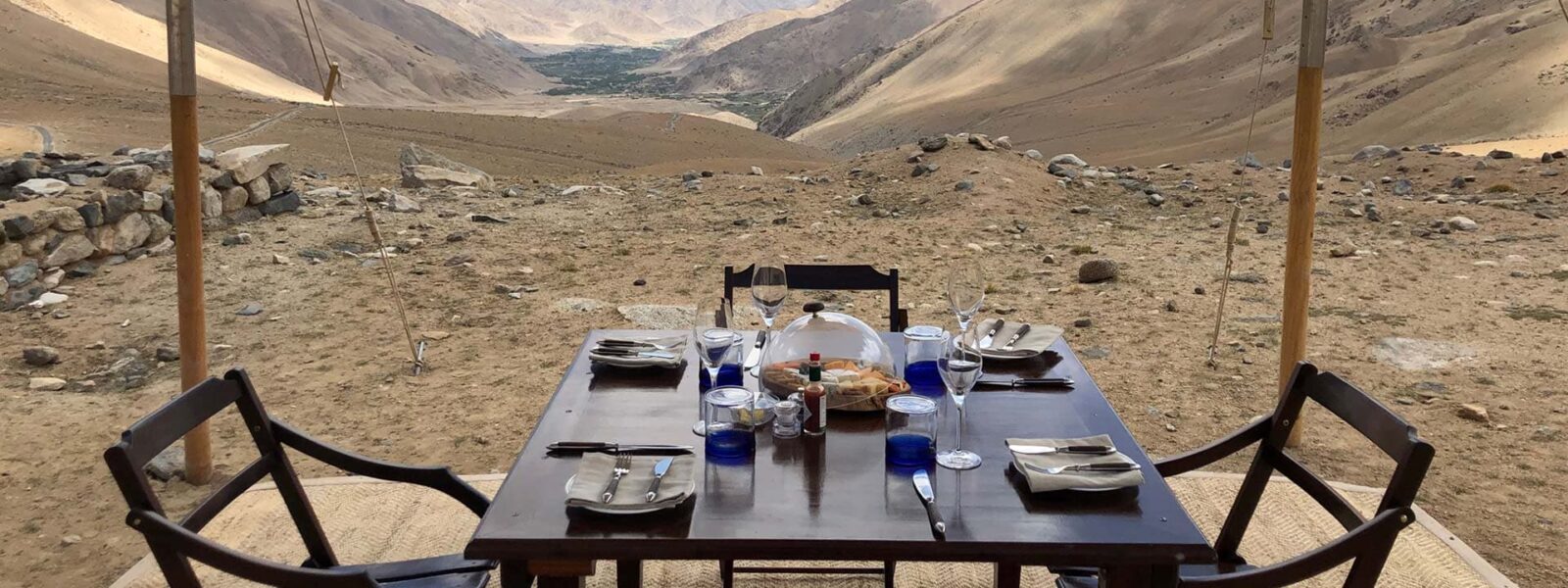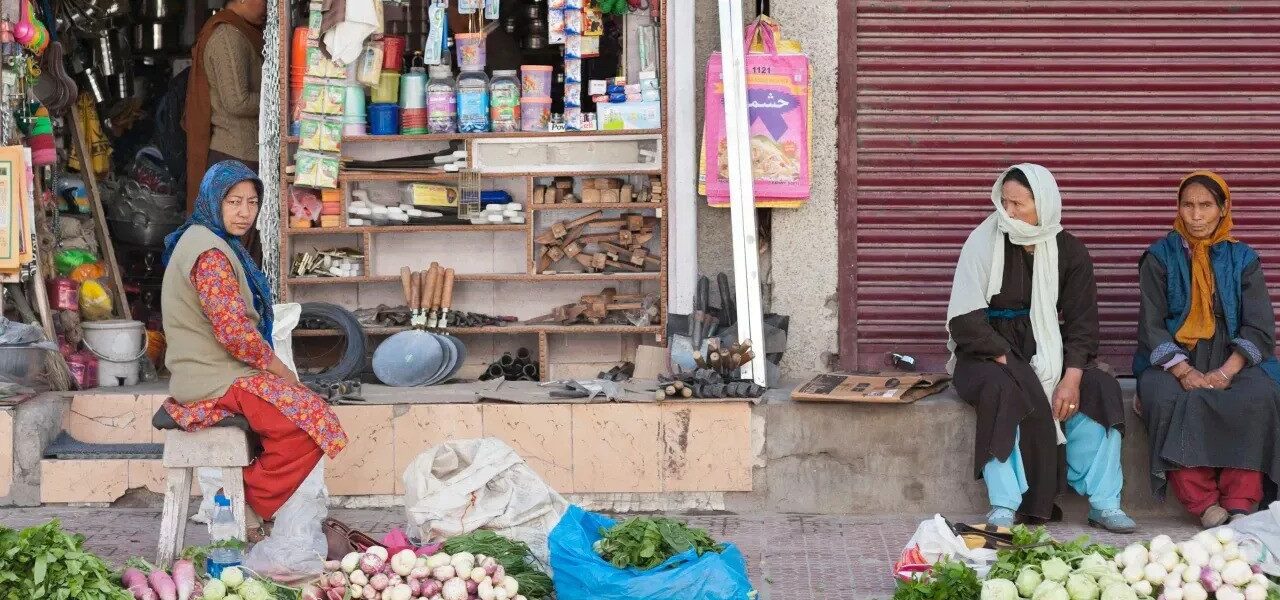Where the Sky Meets the Soul
They say that in Ladakh, the sky begins where the road ends. That the silence here is not empty—but full. I didn’t understand this until I found myself on a winding mountain road, somewhere above 3,500 meters, watching the golden dust of the Himalayas swirl in the rearview mirror. My journey into the realm of high-altitude lakes had begun—not as a destination, but as a quiet revelation.
The first breath I took in Leh was sharp and thin, like mountain poetry written in the language of altitude. The town itself was a cradle of contrasts—crumbling mudbrick houses rubbing shoulders with glinting stupas, prayer wheels spinning beside espresso machines. But my heart was already reaching further, toward the lakes whose reflections were said to hold entire skies within them.
I had read the names before: Pangong Tso, Tso Moriri, Tso Kar—words that sounded like lullabies from another realm. In travel blogs, they were often reduced to postcard scenes. Yet, locals spoke of them as if they were living beings, guardians of silence and mirrors of the divine. I wanted to experience them not as a tourist checking boxes, but as a listener tuning in to nature’s long, slow exhale.
My European sensibility, shaped by Alpine lakes and Mediterranean shores, was about to be rearranged entirely. Here, in Ladakh, lakes are not leisure spots. They are sacred mirrors. Their beauty isn’t loud—it’s meditative. Their colors don’t shout—they shift like the slow movement of a prayer flag in the wind.
The journey to these waters is neither fast nor easy, and that’s exactly why they stay so untouched. To reach them is to surrender to the land’s rhythm—to accept that your plans may shift with the wind, the snow, or a sudden yak in the middle of the road. But in return, you’re gifted moments that feel like they’ve been waiting just for you. A monk’s smile at a roadside teahouse. A child offering dried apricots under a vast, cloudless sky. A sudden hush falling over a mountain pass, as if the whole earth paused to breathe with you.
In the pages that follow, I invite you to travel with me—not just to the lakes themselves, but into the stories, the silences, and the reflections they inspire. Whether you’re dreaming of your next Himalayan escape or simply craving a moment of stillness amid the rush of daily life, these celestial waters may just reflect something deeper within you.
So let’s begin—where the sky meets the soul, and the journey becomes the destination.
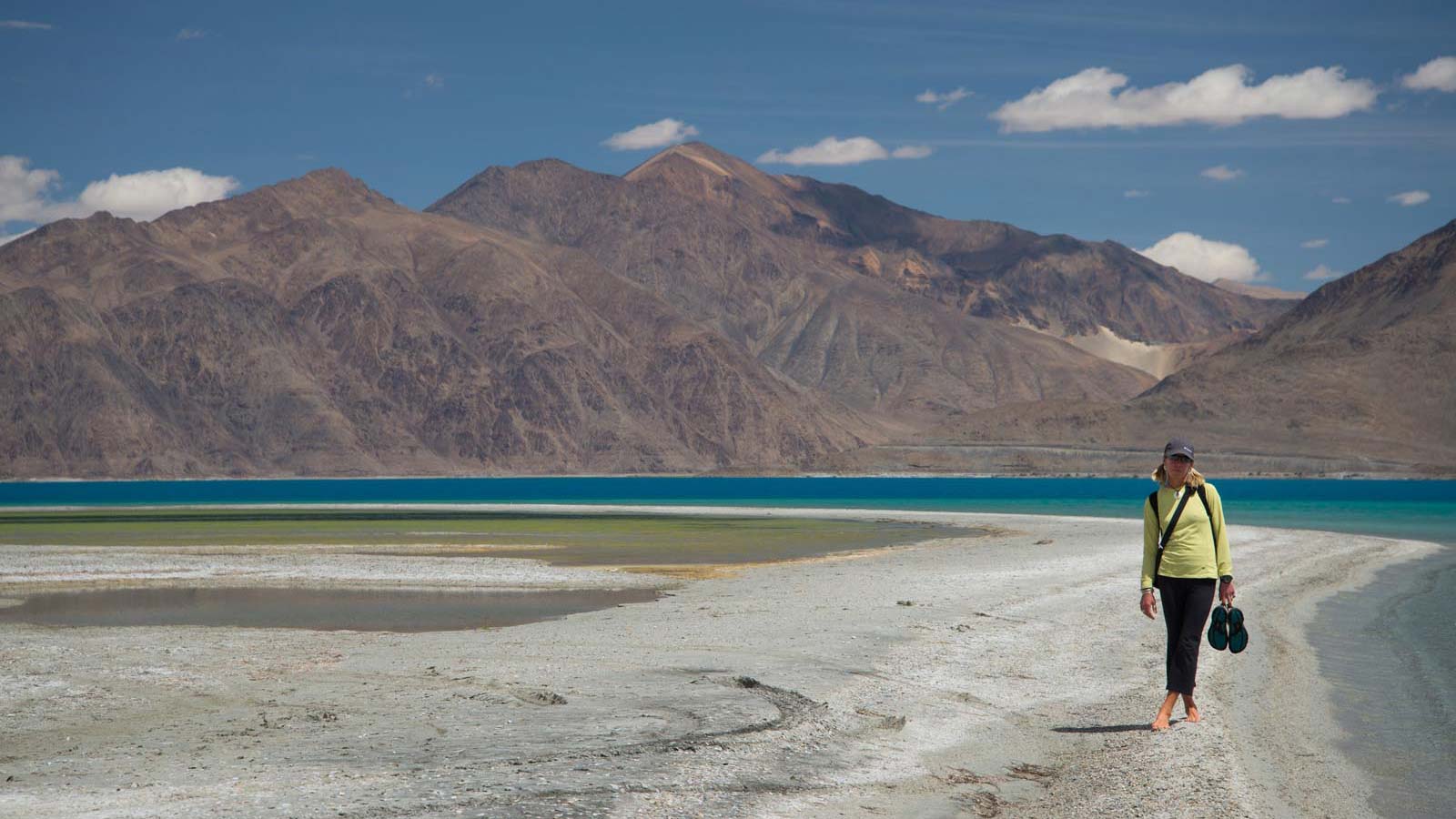
Pangong Tso: The Shifting Colors of Heaven
The first time I saw Pangong Tso, I forgot to breathe. At over 4,300 meters above sea level, this celestial lake stretches like a ribbon of silk across the eastern edge of Ladakh, unfurling towards Tibet. No photograph, no drone footage, no travel brochure had prepared me for its living, breathing beauty. The colors moved. The silence spoke. And I stood there, stunned, watching the sky flow into water.
It had taken hours to reach this place—through dusty switchbacks, past herds of shaggy yaks, and across desolate mountain passes where the air grows thin and your thoughts slow to the pace of the land. But when the lake finally revealed itself, the hardship melted into awe. Pangong Tso isn’t just a lake; it’s an event. A sacred performance of color and stillness, played out daily for those patient enough to arrive.
By mid-morning, the water was a luminous turquoise, the kind of color you’d expect in a tropical lagoon—only here, it was framed by barren brown cliffs and snow-dusted peaks. By afternoon, it deepened into royal blue. And as the sun began to descend, the lake turned slate-grey, then copper, then, somehow, pink. Every few minutes, the light performed some quiet alchemy, and each time I looked, it was a different lake.
Travelers often rush here for the photos, for that Instagram shot with the famous “3 Idiots” movie backdrop. But I lingered by the shoreline, far from the camera flashes, wrapped in a borrowed woolen shawl, watching ripples form and vanish. The wind sang in Ladakhi, and wild geese landed like sacred messengers. I wasn’t just visiting a place—I was part of it.
I met an old man selling tea from a rusted kettle near a row of fluttering prayer flags. “You look like the lake has changed you,” he said with a smile. And he was right. Something in me had quieted. The noise I didn’t know I carried had fallen away. Here, in the presence of this high-altitude mirror, I felt both insignificant and infinite.
For those planning a journey to Pangong Tso, my advice is simple: don’t come for the lake. Come for the stillness it creates inside you. Pack light, travel slow, and when you arrive—just sit. Let the wind talk. Let the silence fill you. And when you leave, don’t be surprised if you carry the lake within you, long after the journey ends.
After all, Pangong Tso isn’t just a destination on a map. It’s a state of being.
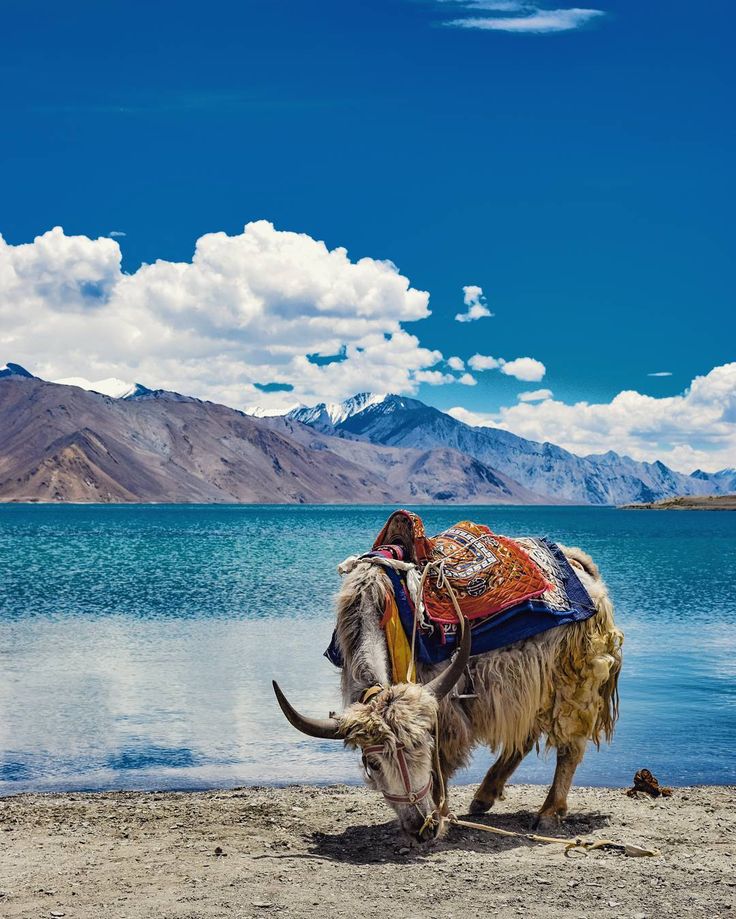
Tso Moriri: Where Silence Sings
If Pangong Tso is the showstopper, dramatic and dazzling, then Tso Moriri is its quiet, contemplative twin. Nestled deep within the Changthang plateau at nearly 4,600 meters, Tso Moriri doesn’t shout for attention—it whispers. It doesn’t rush to impress—it waits for you to slow down, listen, and be still. And when you do, it rewards you with something more profound than beauty: a feeling of peace so vast it feels sacred.
The journey to Tso Moriri is long and humbling. From Leh, it takes nearly eight hours, passing through raw, unspoiled landscapes where signs of human life are few and far between. The air gets thinner. The clouds seem closer. Along the way, I shared the road with wild kiangs (Tibetan wild asses) and gazed across endless plains brushed with the soft palette of a Ladakhi sunrise. Each turn in the road felt like a shedding of noise, a deepening into silence.
Arriving in the village of Korzok, perched beside the lake’s northern edge, I felt like I’d reached the end of the world. Stone houses, prayer wheels, and one solitary monastery overlooking the waters—this was a place where time moved differently. I stayed with a Changpa family in a humble guest room warmed by yak-dung stoves. At night, the wind howled through the valley, and stars multiplied until the sky felt infinite.
Tso Moriri itself was still, almost impossibly so. The lake shimmered with a gentle silver-blue, interrupted only by the soft footsteps of migratory birds or the distant echo of a prayer bell from the monastery. I walked its shores alone one morning, wrapped in wool, my breath visible in the crisp air. There was no agenda—no camera in hand, no checklist in mind. Just me, the lake, and the sound of silence, which, out here, somehow sings.
For the Changpa nomads, this lake is not just water; it is life. They graze their pashmina goats here, perform rituals to honor its spirit, and pass down stories that paint Tso Moriri as a living deity. Unlike Pangong, this lake has remained mostly untouched by the tides of tourism. There are no cafés here, no Wi-Fi signals to anchor you. And that’s what makes it essential.
To travelers from Europe and beyond who seek authenticity, not adrenaline—to those who cherish moments of solitude over spectacle—Tso Moriri is your sanctuary. It’s a reminder that the most moving parts of a journey are not always shared, but deeply felt.
And when you finally leave, retracing the dusty road toward Leh, don’t be surprised if you hear it behind you still—that silence, that song. You won’t forget it. You’re not meant to.
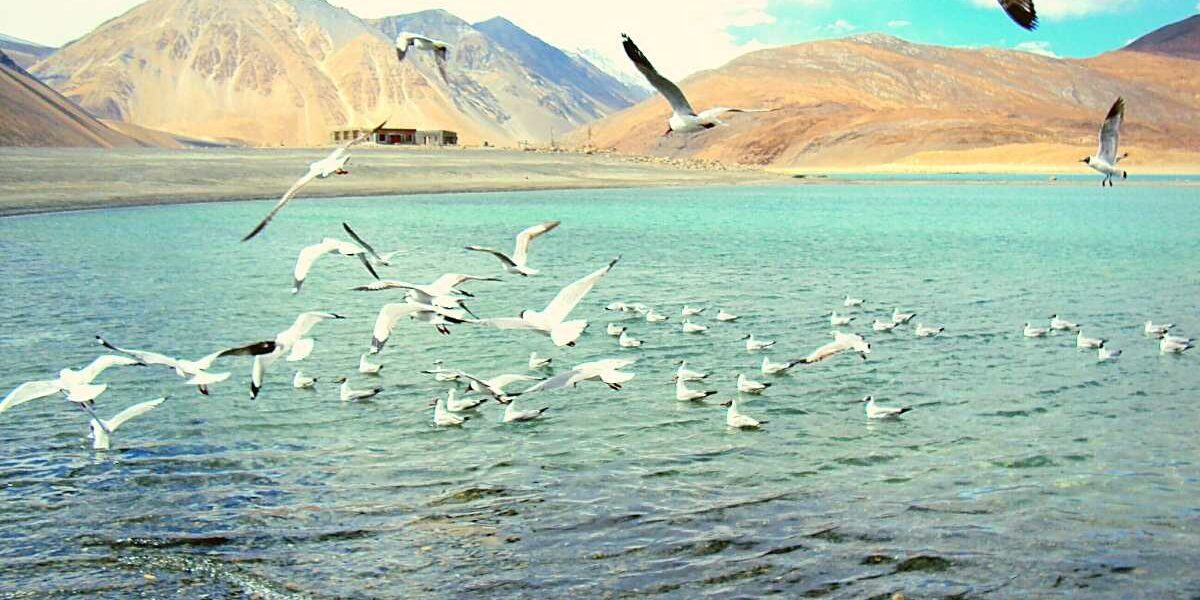
Tso Kar: Ghostly Beauty in the Salt Flats
There’s a place in Ladakh where silence feels ancient—where the wind has secrets and the earth carries a shimmer of forgotten seas. That place is Tso Kar, the “White Lake,” named for the salt crust that encircles its edges like a memory that refuses to fade. Fewer travelers make it here, and perhaps that’s for the best. Tso Kar is not made for crowds. It’s made for those who seek the spectral, the windswept, the beautifully barren.
The landscape shifts long before you see the lake. The mountains grow distant, the sky grows wide, and the road begins to crackle under your tires as if resisting the encroachment of anything too modern. Shepherds wrapped in rough wool wave from the distance. Yaks graze alongside brackish ponds. And then—suddenly—Tso Kar appears. Pale. Vast. Haunting. A mirage that’s real.
Unlike Pangong or Tso Moriri, Tso Kar is not about reflections. It’s about presence. The kind that wraps around you like the high-altitude wind and stays with you long after you’ve gone. This is a lake sculpted by silence, by salt, by time. Its waters are partly saline and partly fresh, divided by invisible lines that only the birds seem to understand. Flamingos, black-necked cranes, and bar-headed geese nest here—a ballet of wings against the backdrop of endless white and stone.
I arrived just before dusk, the sun slung low over the far ridges. The lake didn’t sparkle. It glowed faintly, like a lantern in fog. There was no sound save for the crunch of salt under my boots and the occasional wingbeat overhead. I wandered along its shore, where bones of old caravans and bleached branches lay half-buried in salt. It felt like walking through the ruins of a dream.
The nearby settlement of Thukje is little more than a few homestays and a small monastery. The air is colder here. The nights, sharper. I spent mine under layers of blankets, sipping butter tea beside a stove, listening to an elder recount how the lake has shrunk over decades. “But it’s still alive,” he said. “Alive in a different way. Like memory.”
For European travelers used to Alpine meadows or the lakes of Scandinavia, Tso Kar offers an entirely different poetry—more lunar than pastoral, more elemental than picturesque. It’s not for everyone. But for those drawn to the stark, the strange, and the sacred, it may feel like coming home to a version of the Earth that existed long before we arrived.
Tso Kar doesn’t ask to be loved. It asks to be respected. And if you listen carefully, you’ll hear it answering back—not in words, but in wind, wings, and the crunch of ancient salt beneath your feet.
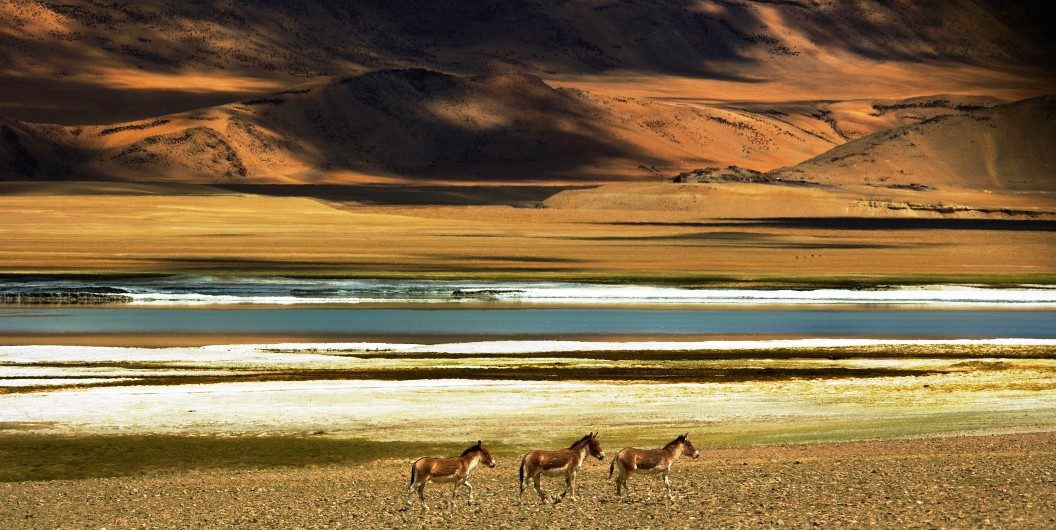
Getting There: The Roads Less Traveled
In Ladakh, the road is never just a means to an end—it’s part of the pilgrimage. The journey to the high-altitude lakes winds through some of the wildest and most breathtaking terrain on Earth. These aren’t roads that rush. They meander, they challenge, they humble. And in doing so, they reveal something essential—not only about the land, but about the traveler.
Whether you’re setting out from Leh or tracing ancient trade routes from Manali or Srinagar, every kilometer is a lesson in stillness. The road to Pangong Tso climbs over the dramatic Chang La Pass, often cloaked in snow even in midsummer. Prayer flags whip in the wind like threads linking heaven to earth. Military trucks rumble by, reminders of Ladakh’s fragile borderland reality. Then, as if breaking through the edge of the sky, Pangong reveals itself—endless and blue.
To reach Tso Moriri, the route is longer, more desolate. You pass through the surreal moonscapes of Chumathang, known for its bubbling hot springs and solitary gompas clinging to cliffsides. The silence deepens as the road unfolds through the remote Changthang Plateau, home to nomads and their elegant pashmina goats. By the time the lake comes into view, it feels like you’ve crossed into another time—a place where modern urgency dissolves into something older and wiser.
And then there’s the journey to Tso Kar—perhaps the most haunting of all. The path leads you across the open plains of Morey Plains, where the land feels almost Martian. Wind howls freely here, and dust devils dance in the distance. For kilometers, there is no sign of life—just sky, salt, and silence. When Tso Kar finally appears, it feels less like arrival and more like encounter.
Transport in Ladakh requires patience and planning. Roads are often rough, affected by weather, and subject to sudden military closures. Hiring a local driver is not only safer—it’s a way to connect with those who know the land’s secrets. I met Rigzin, a soft-spoken man from a village near Nubra Valley, who told me stories of snowstorms, lake spirits, and the time he saw wild horses race the sunset near Tso Moriri. His knowledge turned every bend in the road into a whispered tale.
For travelers from Europe, especially those accustomed to highways and well-marked scenic drives, the Ladakhi roads offer a different rhythm. These routes demand more from you—more time, more presence, more surrender. But they also give more. They turn a journey into a meditation. A map into a memory.
There are no express lanes to the sacred in Ladakh. Only winding paths through wind-carved mountains and glacier-fed valleys. And if you listen, these roads will tell you stories—not just of the lakes they lead to, but of every footstep, hoofprint, and prayer whispered along their way.
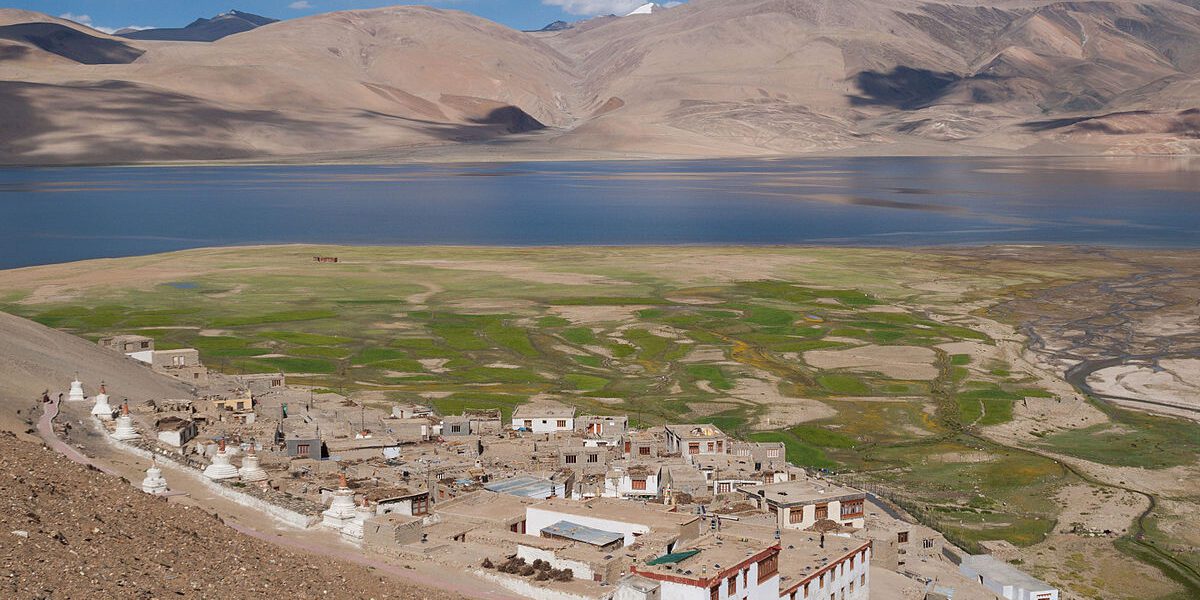
Capturing Reflections: Photography & Soul-Gazing
In Ladakh, the lakes don’t simply reflect the mountains—they reflect you. Your stillness. Your presence. The quiet within. For travelers with a camera in hand, places like Pangong Tso and Tso Moriri offer the kind of breathtaking compositions that seem too perfect to be real. But if you come only for the photo, you risk missing the greater image—the one that forms behind the lens, inside yourself.
That said, Ladakh’s lakes are a dream for landscape photographers. The key is not just what you shoot, but when. The early morning is sacred here. Light spills gently over the ridgelines, brushing the surface of the water with a golden sheen. By sunrise, you might capture the lake at its calmest—glassy, mirror-like, a flawless reflection of the snow-streaked peaks above. This is when the silence feels deepest, and the photograph becomes more than an image—it becomes an offering.
I spent one such morning beside Tso Moriri, crouched on the icy shoreline, my breath visible in the air. A lone black-necked crane glided across the sky, its wings mirrored perfectly in the lake below. I didn’t press the shutter. Not immediately. I watched first. Listened. Felt the light. Only then did I take the picture. That photograph hangs in my study now, but what stays with me more is the moment itself—the hush, the light, the awareness.
For those seeking tips: use a wide-angle lens to embrace the vastness. Avoid midday, when the sun flattens colors and wind may disturb the reflection. Carry a tripod for those golden hour shots. But more importantly—move slowly. Let the landscape lead you. Resist the urge to chase angles. Let the stillness guide your focus.
And then there’s the kind of reflection no camera can capture. The kind that creeps in when you stop framing and start breathing. Sitting by Tso Kar at dusk, the lake chalky with salt and silence, I found myself staring—not at the surface, but into it. I thought about home, about the noise I’d left behind, about how little I needed in that moment. That’s when it hit me: these lakes don’t just mirror landscapes. They mirror what we carry, what we let go of, and what we’re becoming.
For European travelers—especially those used to crowded vistas or picture-perfect viewpoints—Ladakh offers something rarer: space. Space to witness, to wait, to wonder. To photograph not only what you see, but how it changes you. Because in the end, the most powerful reflections aren’t stored in your camera—they live quietly in your memory, called forth again each time you look at water and remember how still you once were.
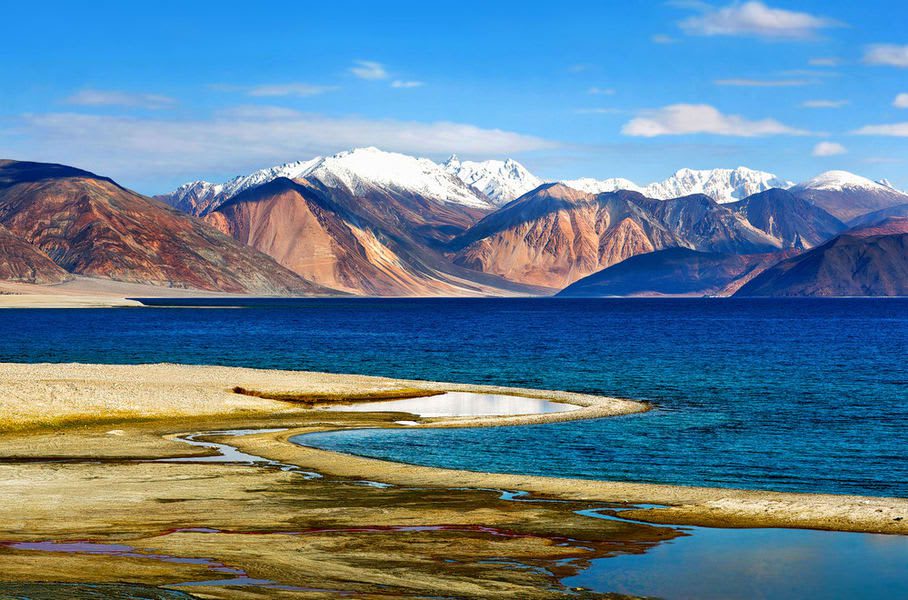
The Lakes Within Us: Why We Keep Returning
Some places stay with you. Not as postcards or souvenirs, but as quiet shifts in how you move through the world. Ladakh’s lakes are like that. They seep into your thoughts long after the journey ends, like water soaking into stone. You return from them changed—not outwardly, perhaps, but within. A little slower. A little softer. A little more aware of the silence between things.
I often think back to a moment on the shores of Pangong Tso, when the lake was still, the sun just beginning to dip below the western cliffs. There was no sound but the faint rustle of wind through a nearby string of prayer flags. I sat on a rock, feet buried in the cool sand, and watched the surface shift from blue to gold. And in that moment, I didn’t feel like a visitor. I felt like I had returned to something I had forgotten—something ancient and familiar, yet entirely new.
For many European travelers, the appeal of Ladakh lies in its otherness—the raw landscapes, the altitude, the deep-rooted spirituality. But there’s something deeper that draws us back: the feeling that these lakes are not just destinations, but mirrors. We come looking for something beautiful. We leave having found something essential.
These waters reflect not only the sky, but our own restlessness, our need for stillness, our longing to belong somewhere beyond the noise of everyday life. In cities where time is measured in alarms and agendas, the memory of a silent morning by Tso Moriri becomes an anchor. A reminder that there is more to us than motion. That somewhere, far above the noise, there is a lake that remembers us.
I’ve spoken with others who feel it too—travelers from France, from Spain, from Germany—who came for a trek or a photo and left with a longing they couldn’t quite name. Some return again and again, chasing that feeling. Others keep it quietly, like a secret, a stillness tucked inside their hearts.
There is a Ladakhi saying: “The mountains don’t call you. The silence does.” It’s the silence of the lakes that calls me back. Not the grandeur. Not the Instagram views. But the profound quiet that asks nothing, proves nothing, but somehow heals.
And so, if you find yourself by these waters someday, let them speak. Not loudly. Not quickly. But clearly, in a voice deeper than words. You may not know it then, but the lake will stay with you. In your breath. In your sleep. In the pauses between sentences. It will wait for your return. It always does.
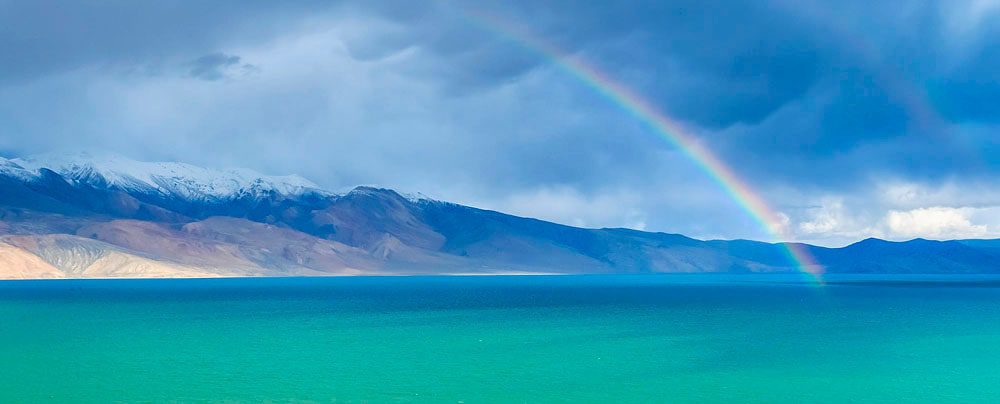
Practical Tips & Gentle Warnings
The beauty of Ladakh’s lakes is not meant to be consumed—it is meant to be approached. With care. With humility. With the understanding that these are not destinations in the modern sense, but sacred places where time behaves differently and nature demands respect. For those preparing to visit, here are some gentle suggestions—offered not as rules, but as invitations to travel with grace.
1. Take Your Time.
These lakes sit above 4,000 meters, where altitude sickness is a real concern. Acclimatize in Leh for at least two days before heading higher. Walk slowly, breathe deeply, and listen to your body. The mountains are patient. You should be too.
2. Dress for Extremes.
In a single day, you may experience sunburn and frostbite. Pack layers—thermal underlayers, windproof jackets, sun hats, and gloves. European summers mean little here. Up at Tso Kar, even July nights can feel like February in the Alps.
3. Stay With Locals.
Choose homestays or eco-guesthouses over large camps. Not only will you support local families, but you’ll also be gifted insight into Ladakhi hospitality—stories over butter tea, stargazing from flat rooftops, and homemade apricot jam at dawn.
4. Be Light on the Land.
Avoid plastic. Carry reusable bottles. Take your waste with you, especially at high-altitude sites with no formal disposal systems. These lakes are fragile ecosystems. Every wrapper left behind is a wound.
5. Know When to Put the Camera Down.
Of course, take your photos. But also remember: some of the most beautiful moments don’t want to be captured. They want to be lived. When the light hits Pangong Tso just right, let yourself feel it before you freeze it in pixels.
6. Respect the Sacred.
Lakes like Tso Moriri are sacred to the Changpa people. Don’t swim. Don’t shout. Don’t play music from a phone. Walk slowly, speak softly, and if in doubt—observe what the locals do, and follow.
7. Travel with Awareness.
Always check local weather, permit requirements, and road conditions. In remote regions, sudden snowfall or border-related closures can change your plans overnight. Embrace flexibility—it’s part of the Ladakhi rhythm.
Many travelers from Europe come to Ladakh expecting nature. They leave having experienced reverence. And that begins with how we prepare, how we move, and how we listen.
After all, these are not just places on a map. They are living landscapes. And when we walk gently, they open their arms and welcome us into their silence.
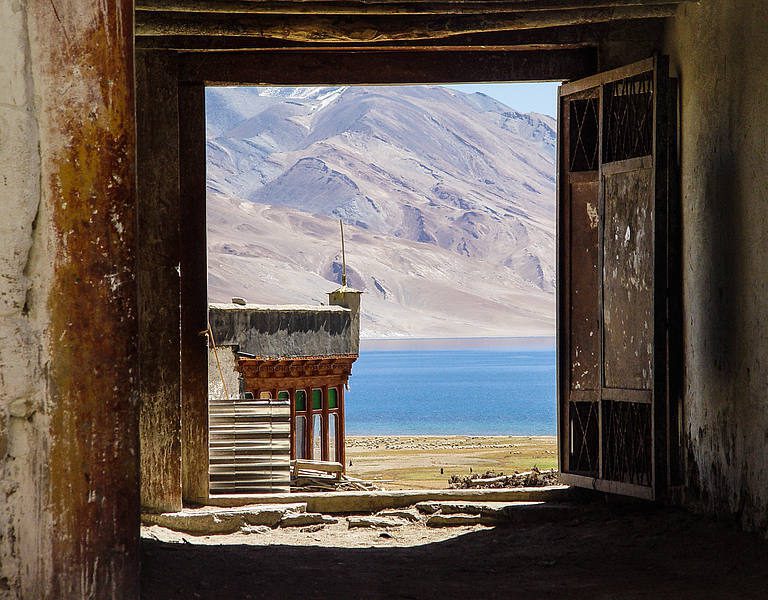
Epilogue: Echoes Across the Water
Long after you’ve left Ladakh, the lakes remain. Not just in memory, but in moments when the world grows too loud and you find yourself yearning for stillness. That yearning is the echo of Pangong’s golden hour, of Tso Moriri’s whispered winds, of Tso Kar’s ghostly beauty. These are not just landscapes—they are companions. Silent ones, perhaps, but no less faithful.
As my plane rose from the Leh valley, the mountains fell away like a slow curtain. I looked down, hoping for one last glimpse of silver-blue water tucked between the folds of earth. But all I saw were clouds. And in that white softness, I realized: the lakes don’t need to be seen to be felt. They had already etched themselves somewhere deeper—in the breath, in the still parts of thought, in the way silence now felt like a friend.
I’ve returned to Europe with no souvenirs, no carved stones or bottled water. Only the echo of Ladakh’s lakes. It returns in quiet moments—in the hush of early morning, in the pause between conversations, in the reflection of sunlight on the Seine or the fjords or even a puddle after rain. Water remembers. And so do we.
If you’re reading this, wondering whether to make the journey, let me offer you this: don’t go just to see the lakes. Go to feel what they mirror inside you. Go to let go. Go to listen. Ladakh doesn’t offer convenience—it offers clarity. It strips you down to your essentials. And in that nakedness, you discover something you’d lost in the noise.
For those who have been—come back, when the mountains call again. For those yet to go—wait for the silence. When it finds you, you’ll know it’s time.
Because some places, once visited, never truly let you go. They ripple across your life like water across stone. Quietly. Eternally.
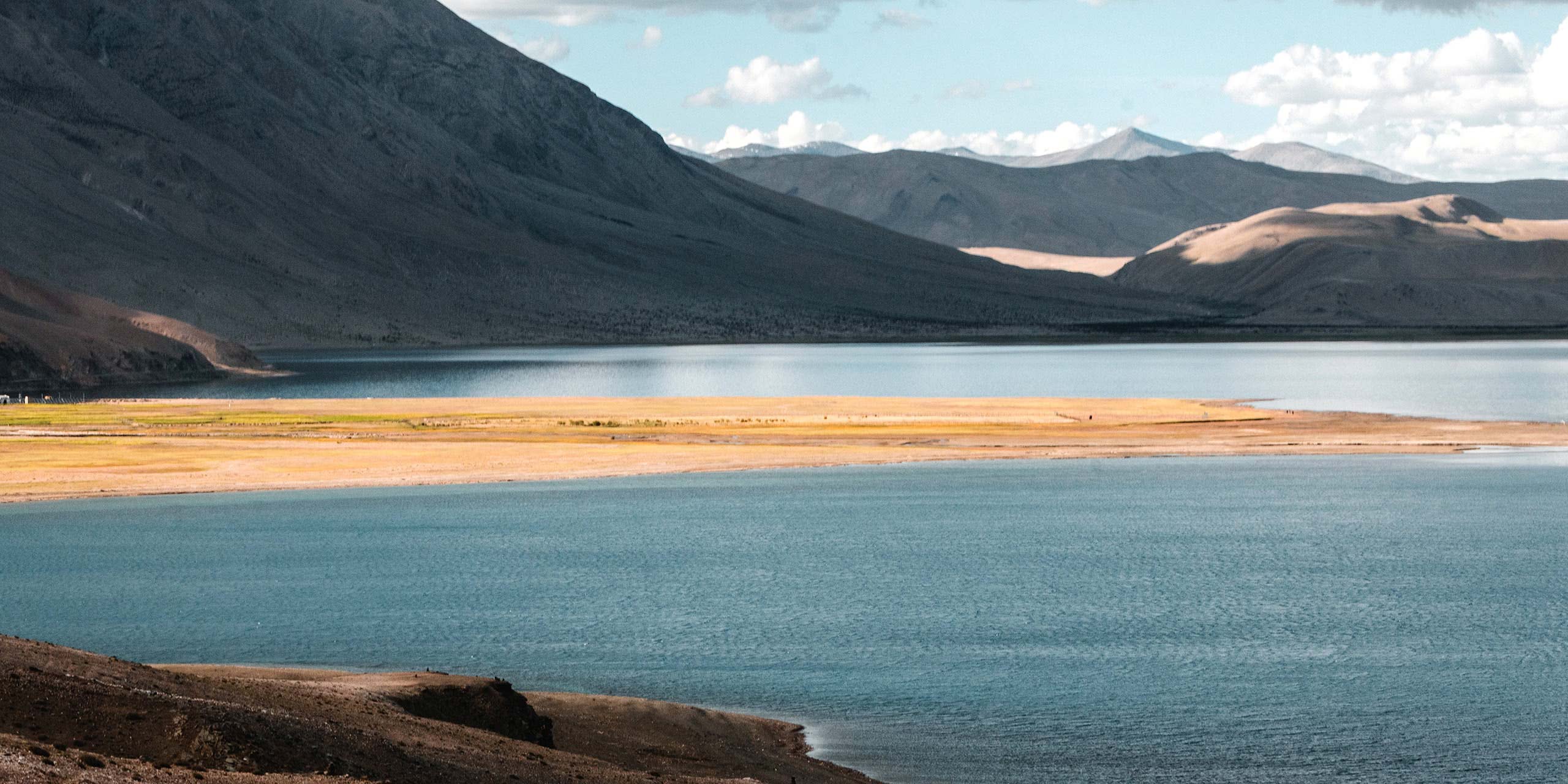
About the Author
Elena Marlowe is a European travel columnist who seeks silence over spectacle and stories over checklists.
She has wandered from the Scottish Highlands to the fjords of Norway, but it was the quiet lakes of Ladakh that captured her heart and never let go.
Through her writing, Elena invites readers to travel inward as much as outward—because every true journey begins with stillness.
When not chasing reflections in remote corners of the world, she can be found sipping mint tea, reading mountain poetry,
or watching clouds drift across a northern sky from her home in Slovenia.

